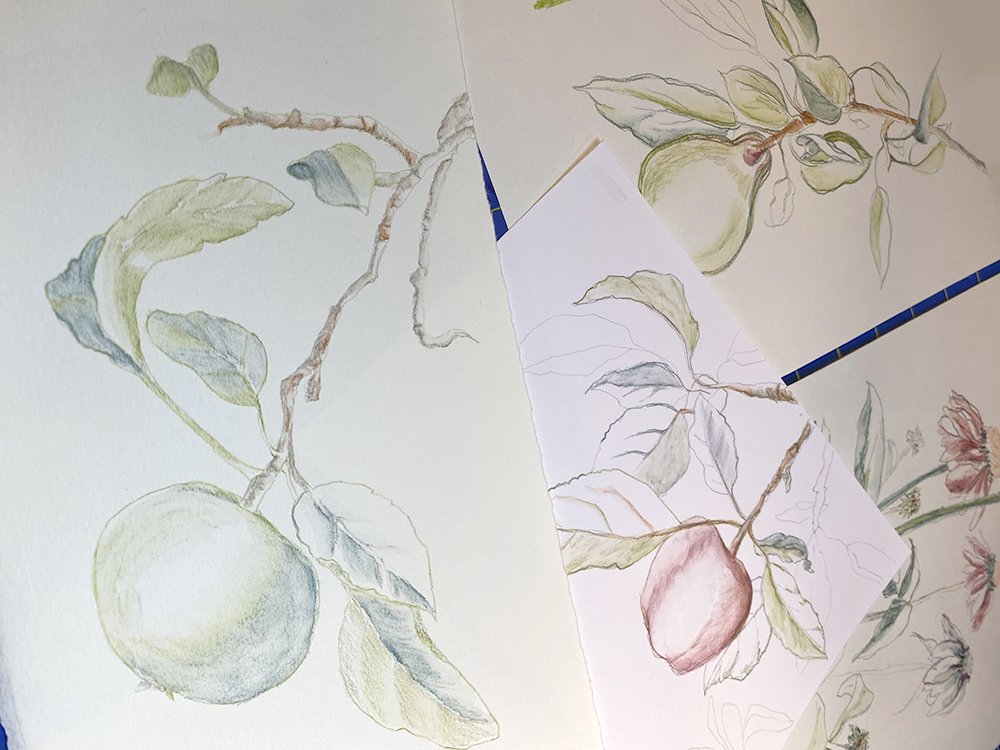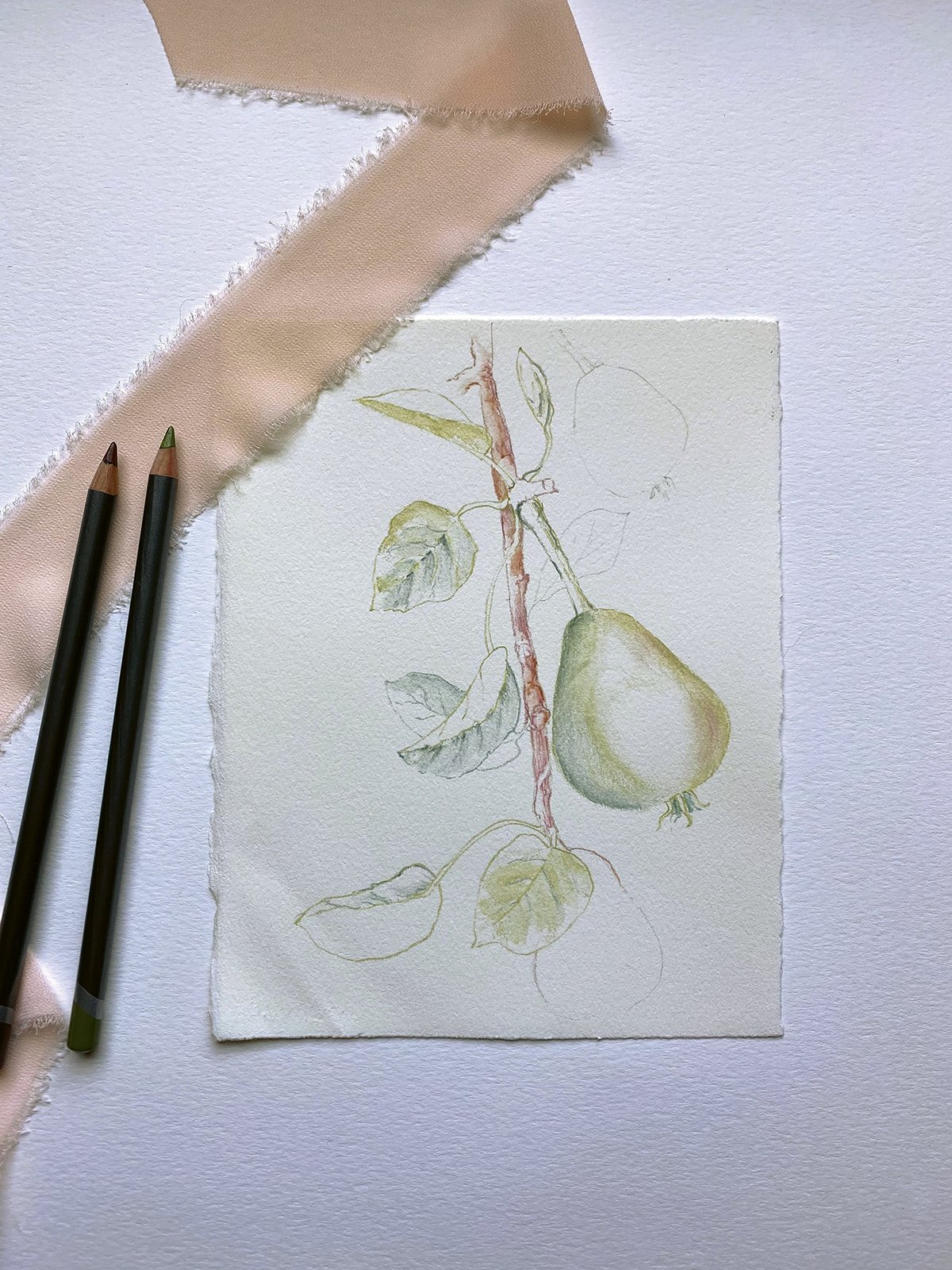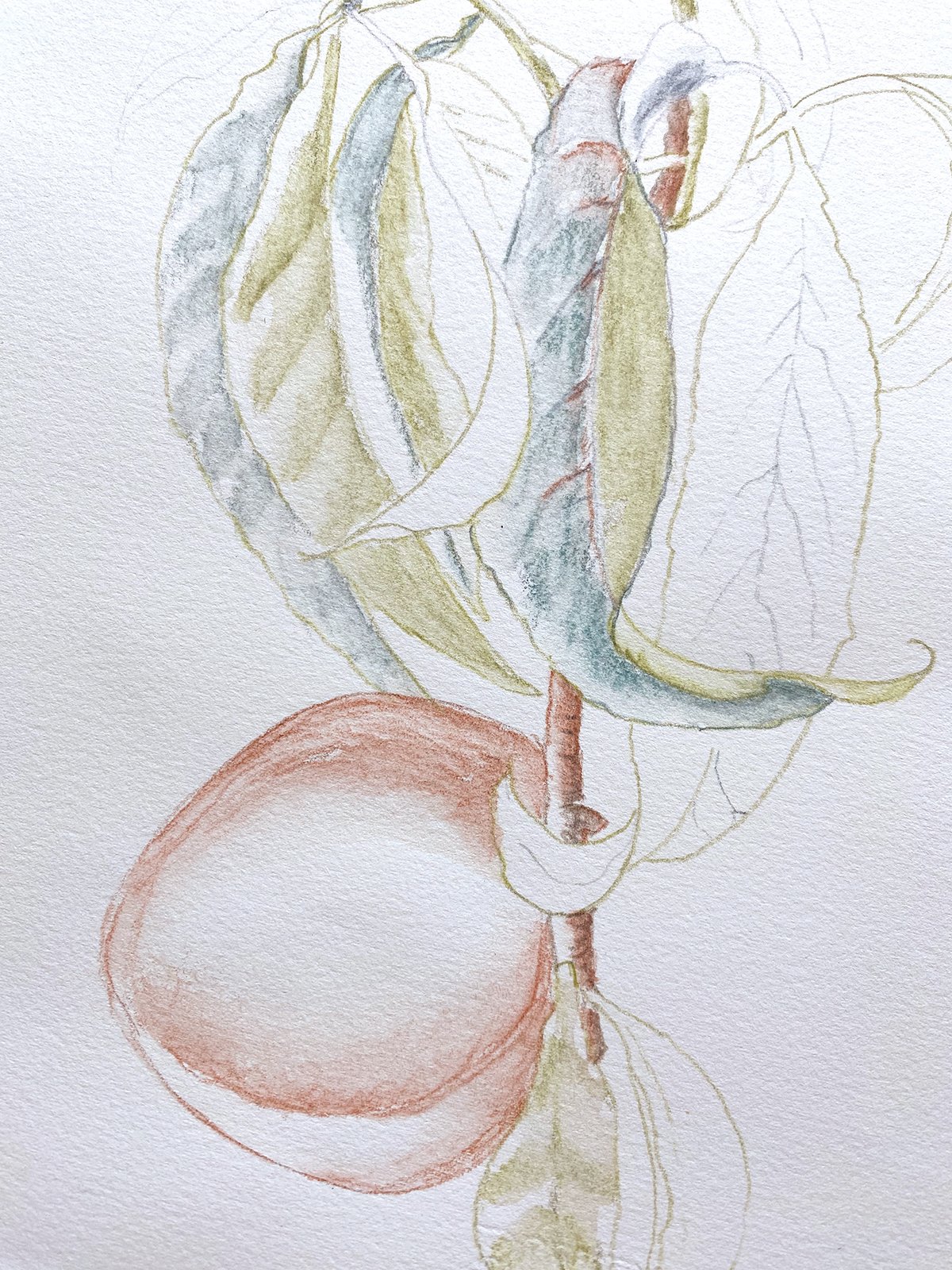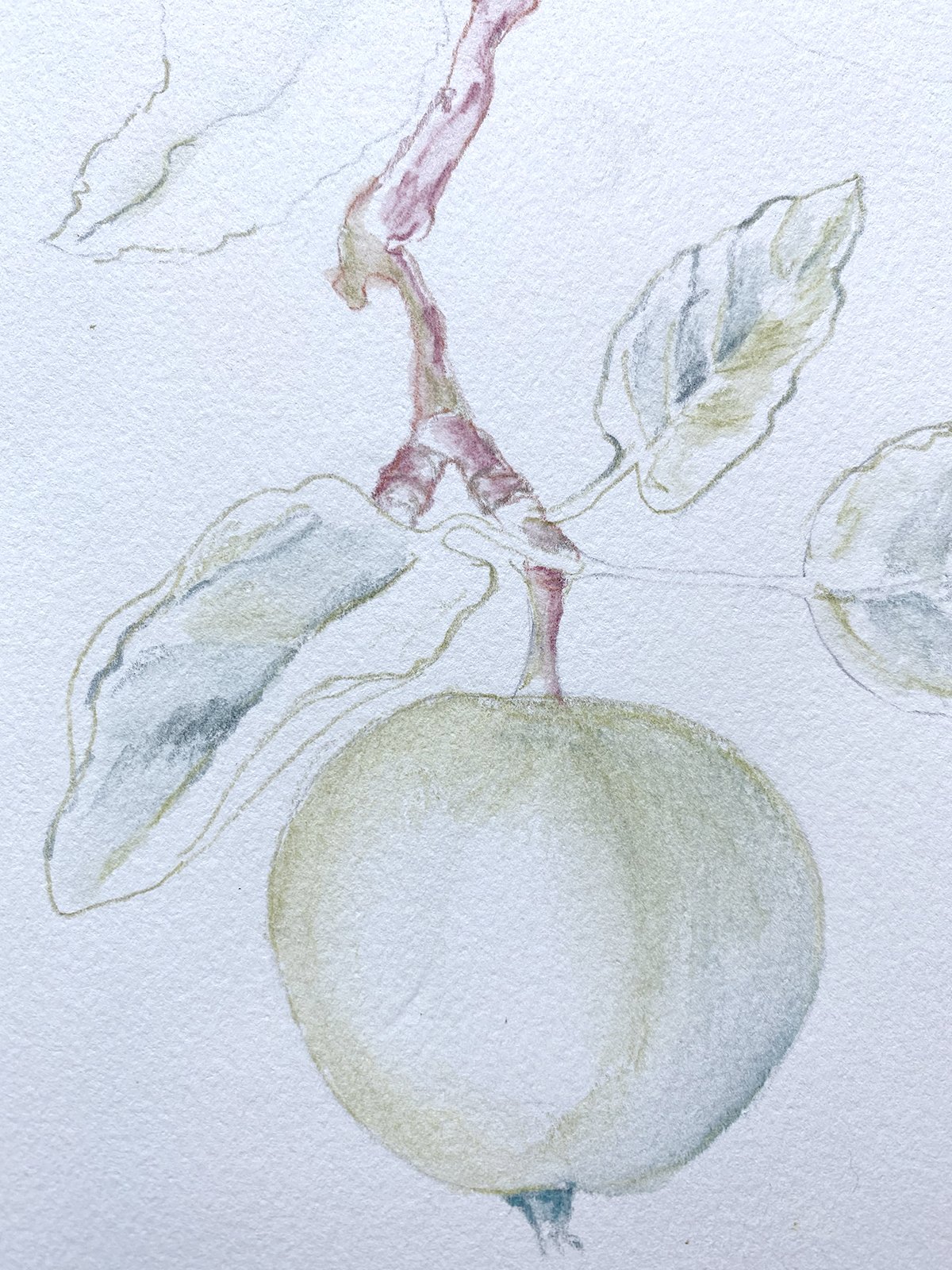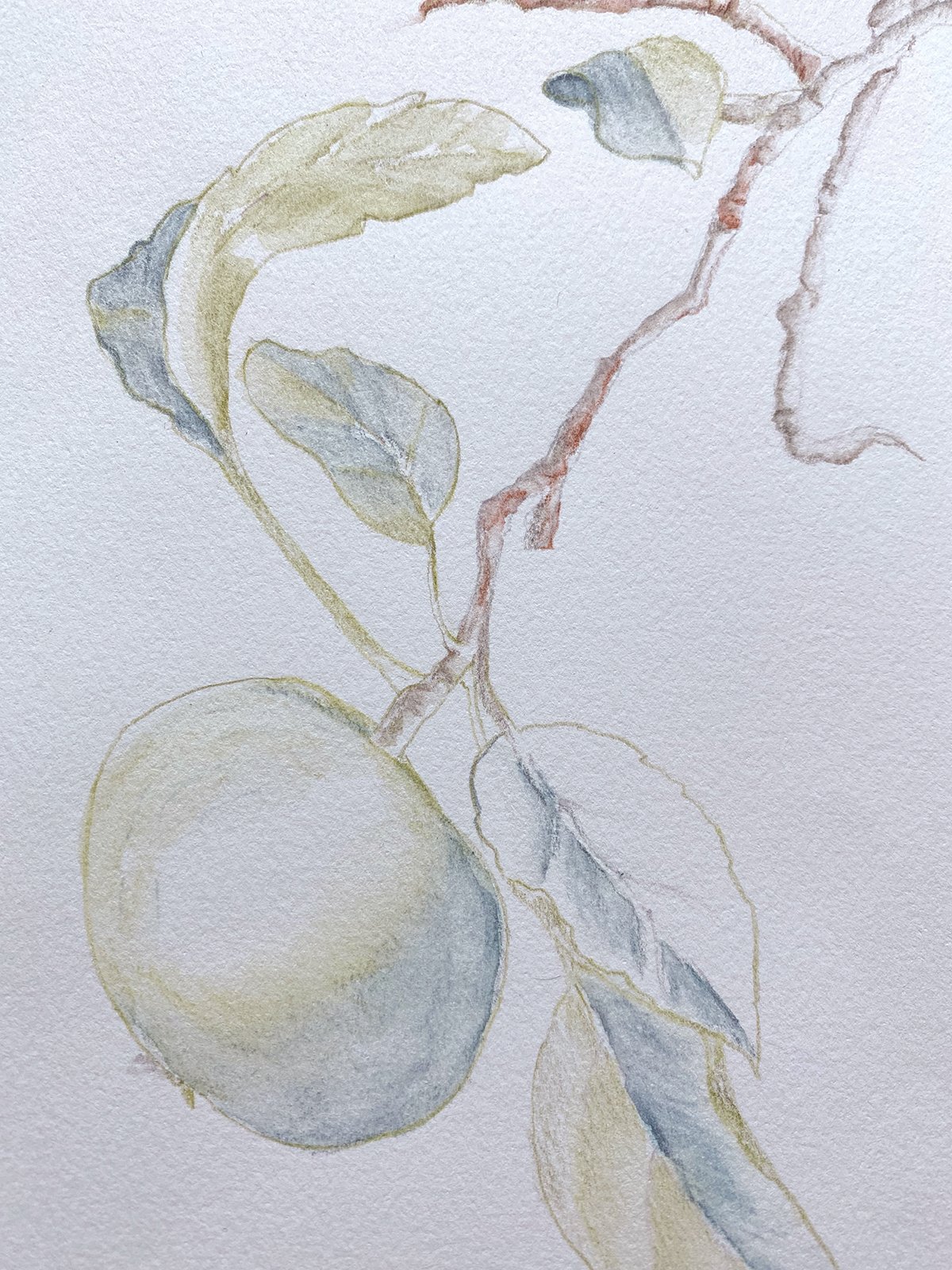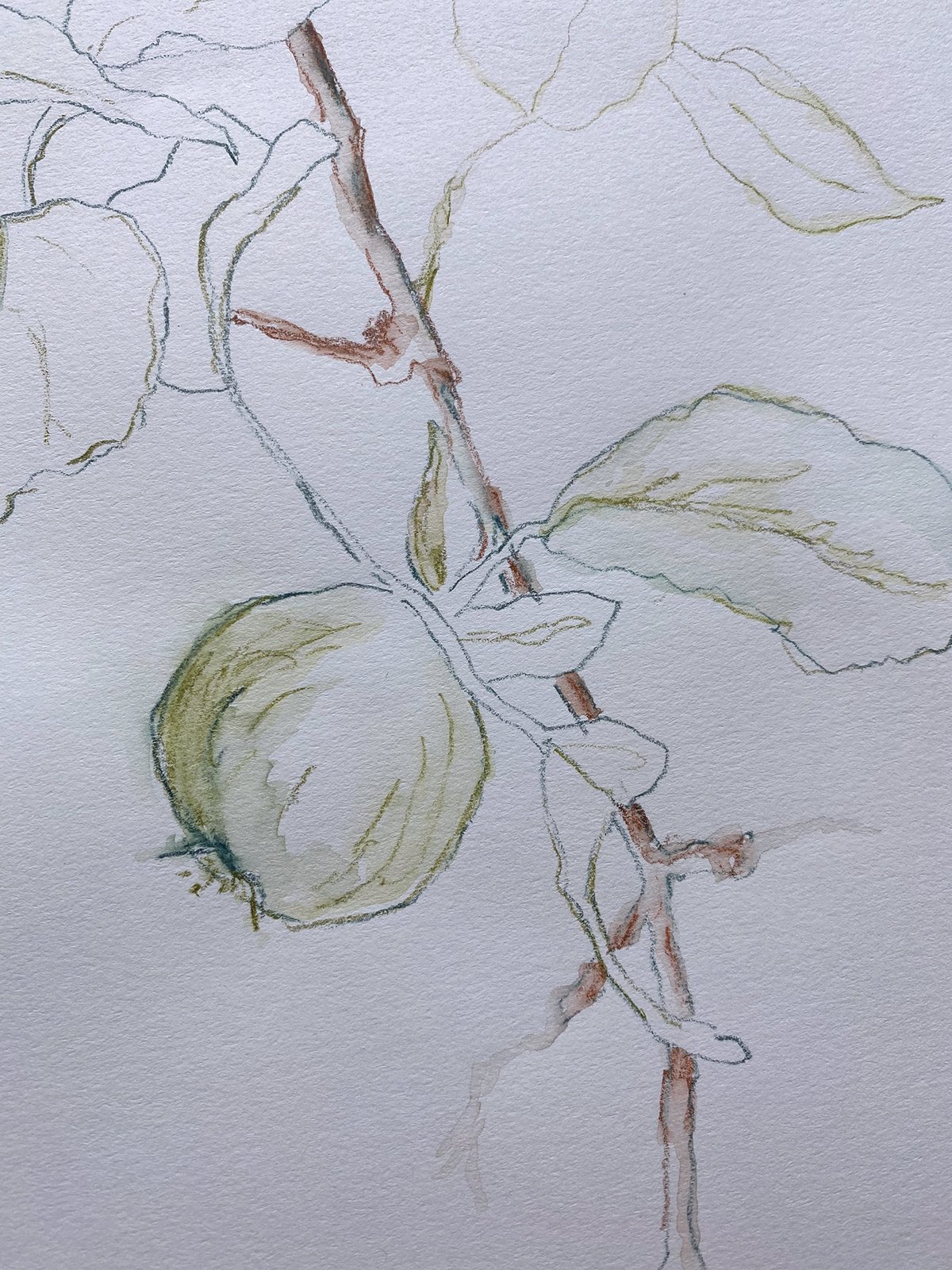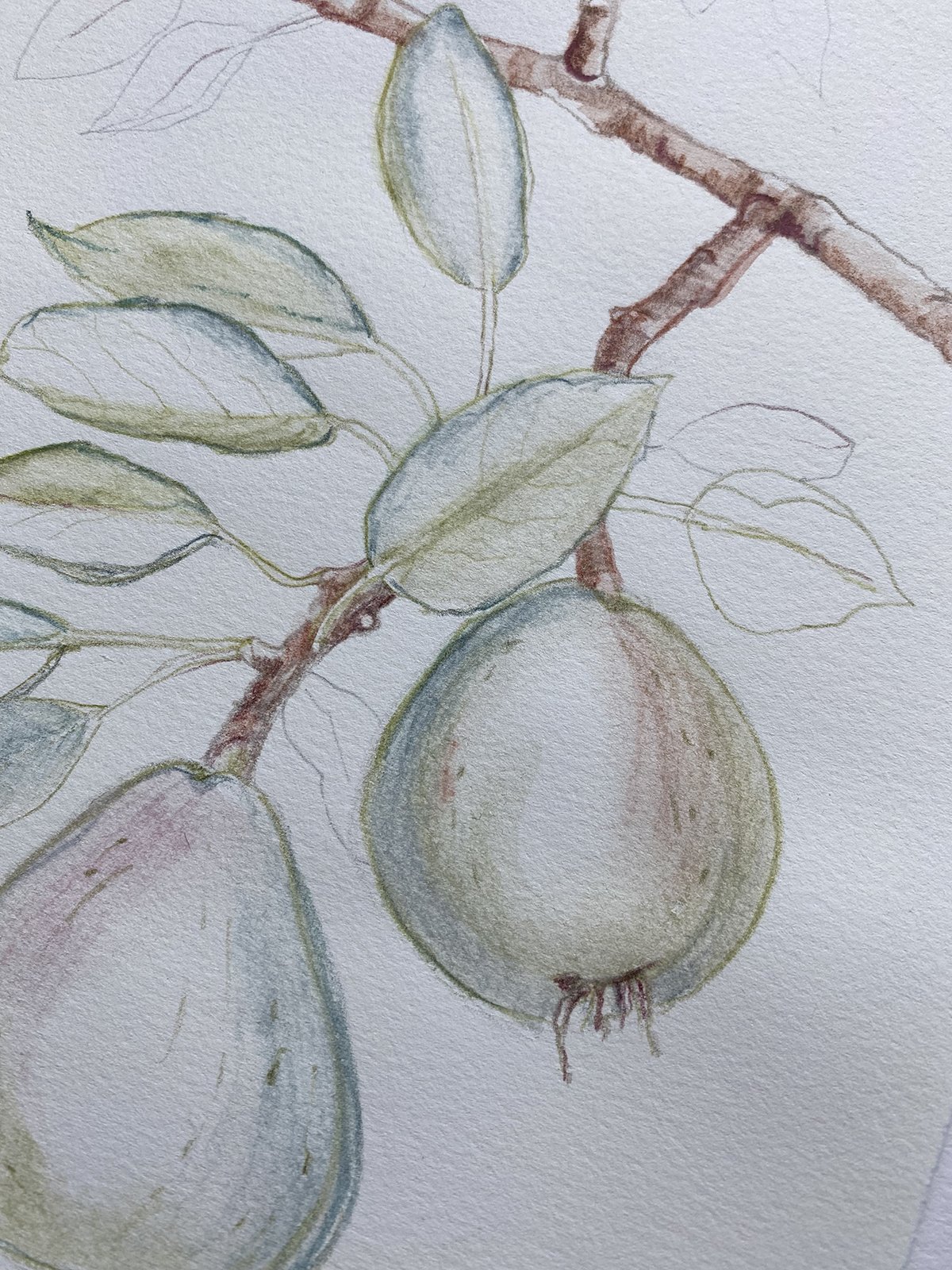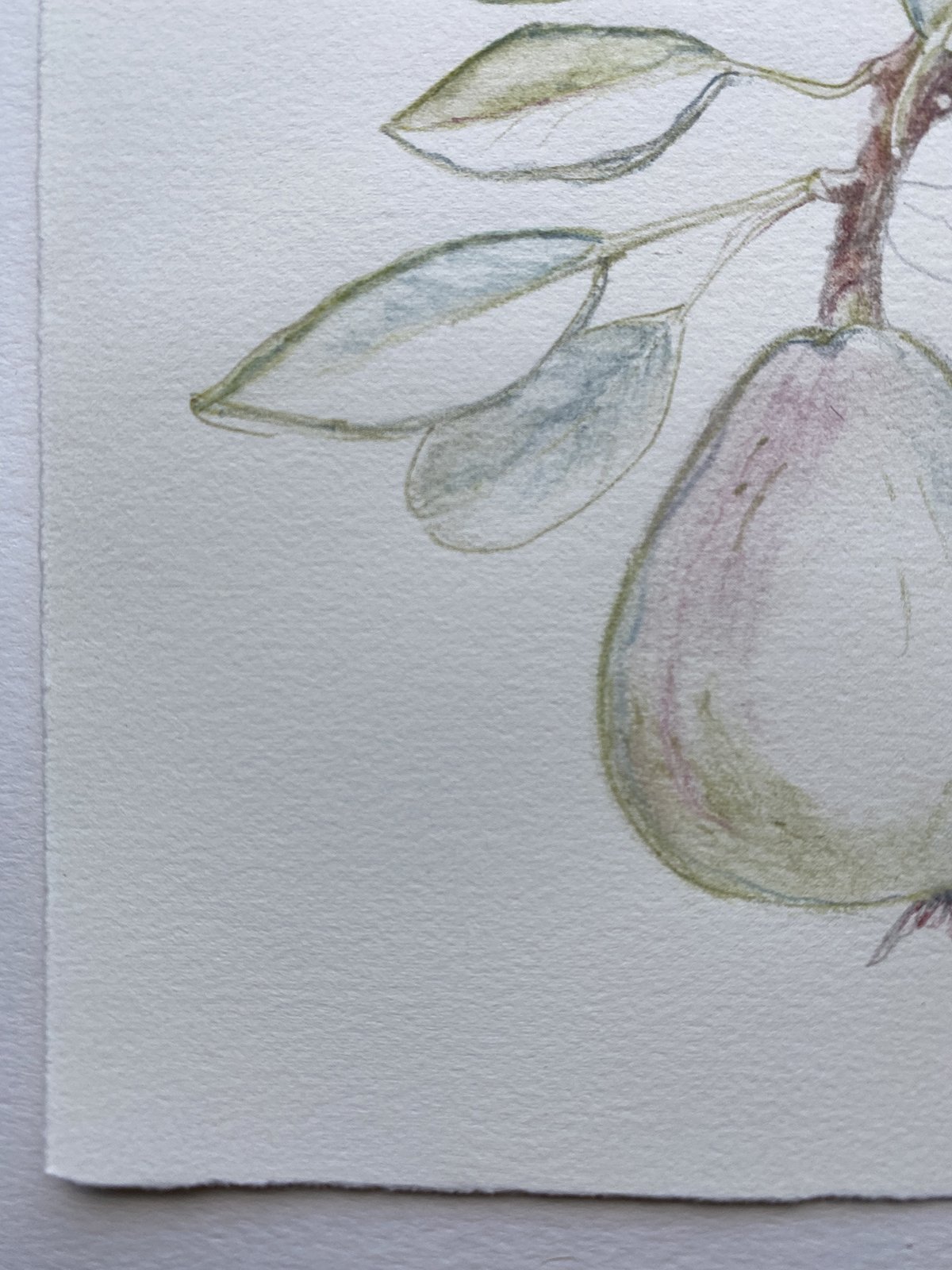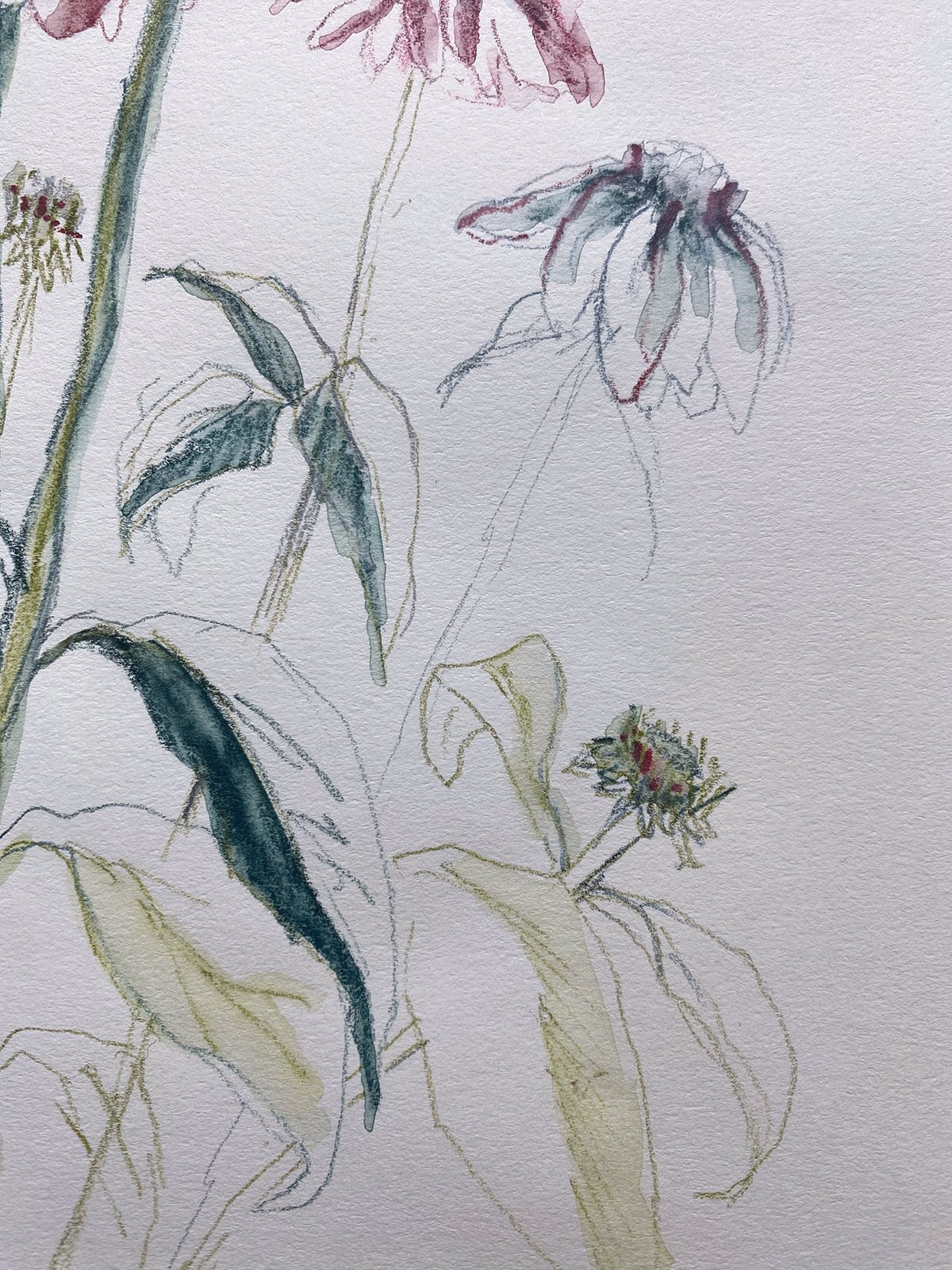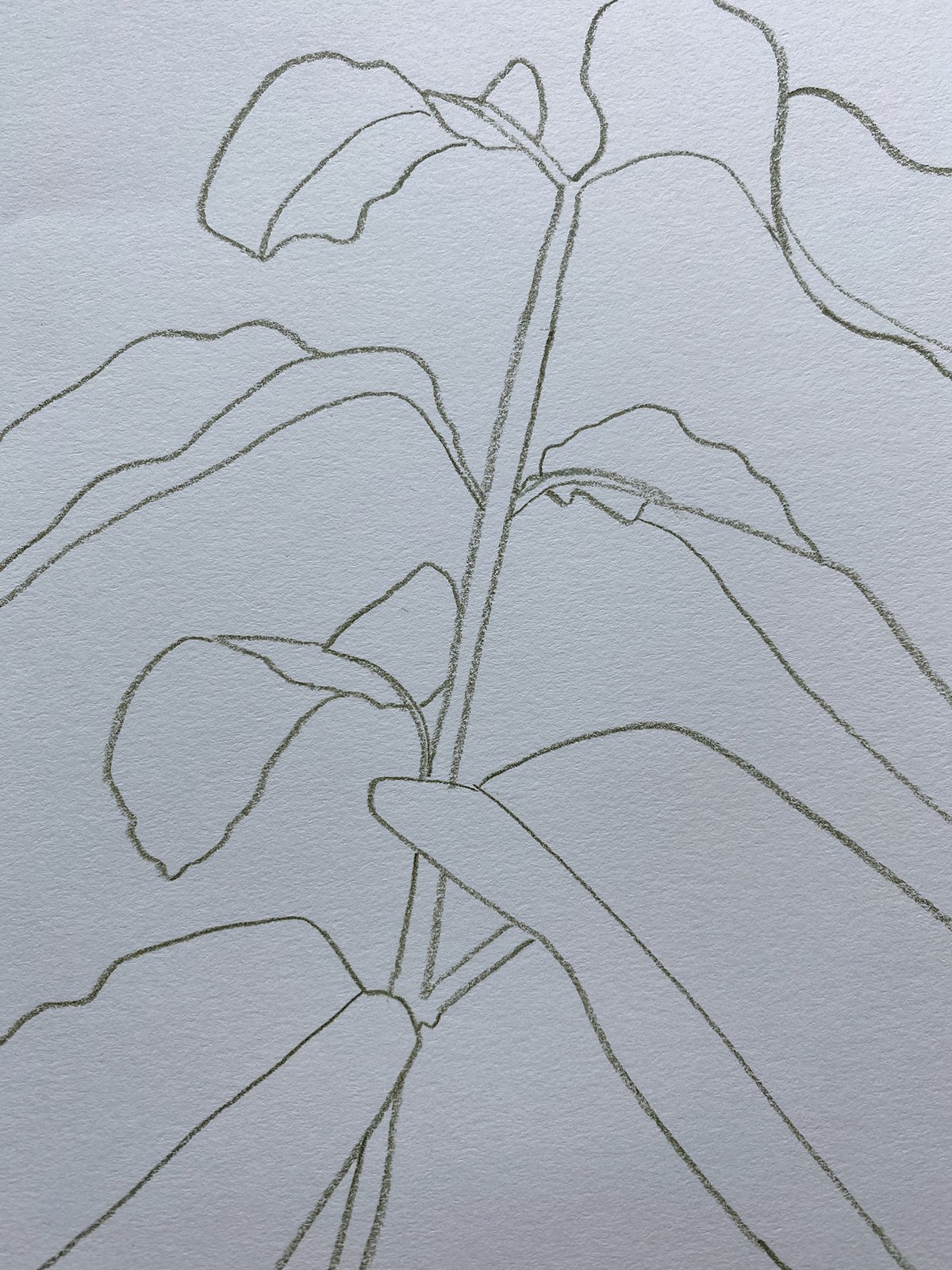Summer Notes: A Botanical Series of Studies
“Study nature diligently, be guided by nature.... for truly art is hidden in nature and he who can draw it possesses it.”
My Why:
Drawing from observation is a very grounding experience – one I allowed to guide me this summer. The sounds you hear, the birds, the bees, the movement of air around you, the scent of blossoms infuse the work. It becomes a meditative exercise in looking, recording and being.
So, I knew that I needed to create a series of drawings to expand on my thoughts as blossoms carpeted the ground in early Spring and new leaves opened and expanded into the summer season. There is softness, newness and a special kind of energy expelled in these gardens.
The Medium
This collection is mostly drawn on varying cream-colored paper specifically made in France. It’s 100% cotton, acid-free and so very soft and luscious to draw on. For drawing, I used graphite and Prismacolor pencils and for blending I used Derwent Graphitints that are water-soluble.
History of Botanical Art
Botanical art is often depicted without backgrounds, animals or shadows using watercolors or ink only. The plants are the only subject on the paper. Notes and additional sketches are included to support the early forms of the plant.
Botanical art is art whose goal is to depict whole plants or parts of plants in a manner that is both aesthetically pleasing and scientifically accurate. ~ Source: Botanical Artists of Canada
Reflecting intimate knowledge and understanding of the subject based on firsthand observation by the artist. ~Source: Definition of Botanical Art according to the Strategic Plan of the American Society of Botanical Artists
During the Age of Discovery, when botanical illustrators accompanied explorers and plant hunters, botanical illustration became a way of making a record of what a plant looked like. This then enabled the scientists of botanical gardens to make sense of the dried specimens of plants being brought back from overseas expeditions - which were often in a press and brown and flat.
